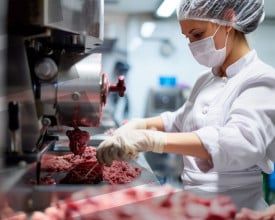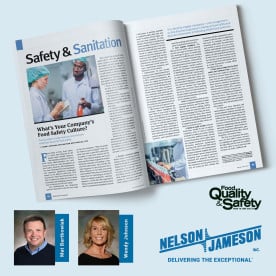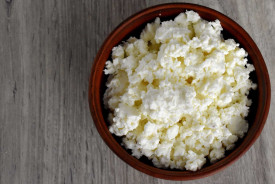cross contamination
- December 06, 2021
As the song goes, “if the fates allow” we’ll perhaps be able to see more friends and loved ones in person this holiday season. If you are hosting any holiday guests, it can often feel like you have enough on your plate to begin with (a small holiday pun there...), before even thinking about guest dietary restrictions. However, a bit of planning can go a long way to make all of your guests feel welcome and cared for, no matter what dietary restrictions they may face due to factors like their religious affiliation, personal preference, health issues, allergies/sensitivities, etc.
More specifically here, in terms of contending with food allergies you can use these seven festive tips to better accommodate your guests with these dietary restrictions.
- Know your major allergens. 90%(!)
- July 02, 2021
Summer is here! What a perfect opportunity to get outside and enjoy the warm summer air we've all been craving! For some individuals, spending time outdoors could involve hiking,
- March 31, 2021
Springtime brings many new colors, from the flowers popping up in gardens to the spring and summer produce offerings at the grocery store. During this colorful time of year, it might be the perfect opportunity to take a look at color-coding in your facility, whether that means starting a new color-coded program or expanding an existing program.
Nelson-Jameson has expanded our color-coded program once again with the release of our 2021 Color-Coded Catalog. This year's catalog has grown to 68 pages of products that are designed to help prevent allergen migration and cross-contamination. A complete color-coded program helps to lay the foundation for a solid food safety program, and can help minimize the risk of cross-contamination.
Why choose a color-coded system? A complete color-coded system helps promote organization and efficient workflow. Designating critical control areas and zones helps your sanitation program by ensuring that the tools stay in the areas in
- February 19, 2021
Ten years...that’s a long time, right? But...not really. The more I see 10th, 20th, or 25th-anniversary releases of favorite albums or movies, the more I feel like time is slipping away...and ten years seems more like a blink. So, when you consider the dichotomy of the slow and all-too-quick hands of time, it’s impressive how much has been accomplished, and yet how far we have to go in food safety since the Food Safety Modernization Act was enacted in early 2011.
As much as it would be great to go with either a “yay” or “nay” as to whether it has been a success, like many pieces of major legislation, there have been both phenomenal strides as well as stagnation. As food safety is a complex undertaking, involving waves of domestic and global political and trade relations, budgetary concerns, etc., the quality assurance of the Act itself can be a challenge at times. As we’ll see though, overwhelmingly,
- January 04, 2021
Achieve an effective sanitation program in your facility with footwear and surface sanitation products! In the food production process, cross-contamination can occur at any point. Employees can track in a myriad of potential contaminants and unknowingly put an operation at risk each time they breeze through a doorway to a production area. Having an effective sanitation program in place that addresses employee hygiene is key.
A primary route of contamination is the bottom of people's shoes, so cleaning footwear has become just as important as washing hands when coming into a facility. "Items which contact the floor are contaminated and could serve as vectors; despite daily cleaning of high-touch surfaces such as floors, it has already been shown that bacterial and viral contamination return rather quickly" (Pyrek, 2018, pp. 1). To help combat this issue, Nelson-Jameson carries several options for minimizing contamination from footwear including:
- November 23, 2020
Thanksgiving is the holiday we are all familiar with that originated from when the Pilgrims celebrated their first successful harvest in America around the 1620's. Today most families celebrate this holiday by spending time with family and expressing what they are most grateful for. For my family, one of our favorite traditions is watching the Macy's Thanksgiving Day parade and eating one of the largest meals that is prepared once a year for this holiday. This year, instead of the usual things we give thanks to, let's focus on giving thanks to food safety and all of the work that goes into keeping the food we consume on Thanksgiving, safe.
According to the USDA, "in calls to the United States Department of Agriculture Meat and
- October 03, 2013
Color-coding is an essential part of many of the operations that we at Nelson-Jameson sell to in the food industry. Color-coded products provide an effective way to organize materials/areas and to prevent cross-contamination. Working with our suppliers, Nelson-Jameson has aimed to offer an unprecedented, wide range of colors and products to meet the needs of our customers. You can check out our current catalog of color-coded products here.
Right now, we are working on adding even more colors and products to our offerings. This is where we would like your help! We are considering the inclusion of a new color, pink. If we were to add this color to our offerings, what specific items would you like to see added?
In addition, we are seeking out ways to take on customer needs when it comes to existing lines. What color gaps (orange, purple, black, etc)





